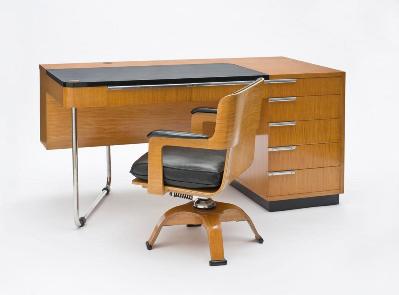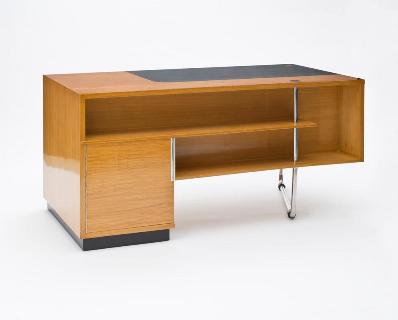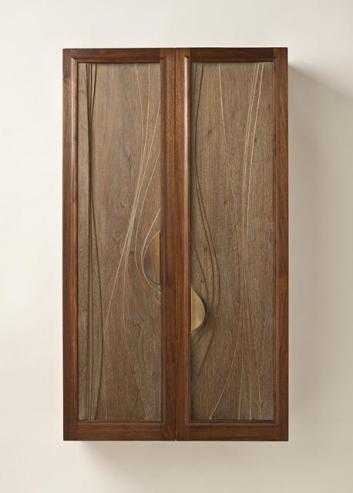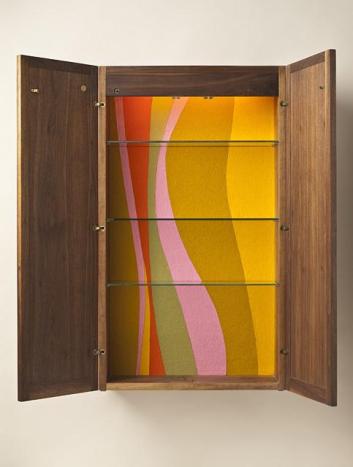Decorative arts and design are often made with a few secrets and surprises—hidden drawers, colorful interiors and ornate decorations in unexpected places. As displayed in a gallery, it’s not always possible to show everything. For your eyes only, two of our curators have unlocked, turned over, and opened up four works of art to reveal to you the wonders that are normally hidden from view. Yesterday we looked at two objects on view in our European galleries; today, Bobbye Tigerman shows two objects in LACMA’s California design collection.

Kem Weber, Desk and chair from the Golden Gate International Exposition, San Francisco, c. 1938, purchased jointly with funds provided by the Decorative Arts and Design Deaccession Fund, Viveca Paulin-Ferrell and Will Ferrell, Shannon and Peter Loughrey, Heidi and Said Saffari, and Holly and Albert Baril
Trained as a cabinetmaker and architect in Germany, Kem Weber came to Southern California in 1914 to oversee construction of the German pavilion at the Panama-Pacific International Exposition in San Francisco. He remained in California and became a leading figure in the development of modern furniture design and architecture. This desk was made for another important San Francisco world’s fair—the Golden Gate International Exposition on Treasure Island in 1939. For this fair, Weber was asked to design a “contemporary living room” and created this desk and chair for that installation.

Desk, back side
The back of this desk probably would not have been concealed; in fact, some would argue that it is the most interesting side of the piece! Unlike most desks which are placed against the wall, this one would certainly have been meant to stand in the middle of the room and be admired from all sides. The built-in shelves both provided display space and served a decorative effect, with the asymmetrical arrangement of positive and negative space based on simple geometries of squares and rectangles. This desk will be on view to the public for the first time since 1939 in the upcoming exhibition California Design, 1930–1965: “Living in a Modern Way,” opening in October.

John Kapel, Crystal Cabinet, c. 1978, Decorative Arts and Design Council Fund
Furniture-maker John Kapel is the Kevin Bacon of modern design: he seemed to be everywhere and know everyone! He studied art with Victor Schreckengost at the Cleveland Institute of Art and industrial design at the Cranbrook Academy of Art in Michigan. He then moved to New York to work for industrial designer George Nelson, but decided to change coasts and careers in 1954, after being inspired by an article about the pastoral lifestyle of Sam Maloof, who was making furniture by hand at his rural home in Alta Loma, California. In his long career he straddled the divide between designer and craftsman, creating furniture designs for production companies and hand-making pieces in his studio for private clients. The sculpted doors of this liquor cabinet are graceful and organic and the handles are seamlessly integrated into the design. But you are in for a real surprise when the doors swing open…

Crystal Cabinet with doors open
In a departure from the natural feel of the exterior, the inside of the cabinet is lined with vibrant pieces of undulating felt in a color palette very typical of the 1970s era in which it was made. When filled with glasses and liquor bottles, it would have added a lively spirit to any cocktail party!
Bobbye Tigerman, Associate Curator, Decorative Arts and Design



